Chris Parkin takes a look at the latest chassis rifle from one of the biggest names in the business - the Barrett 98B Field in .308 Win is reliable, accurate and beautifully built...
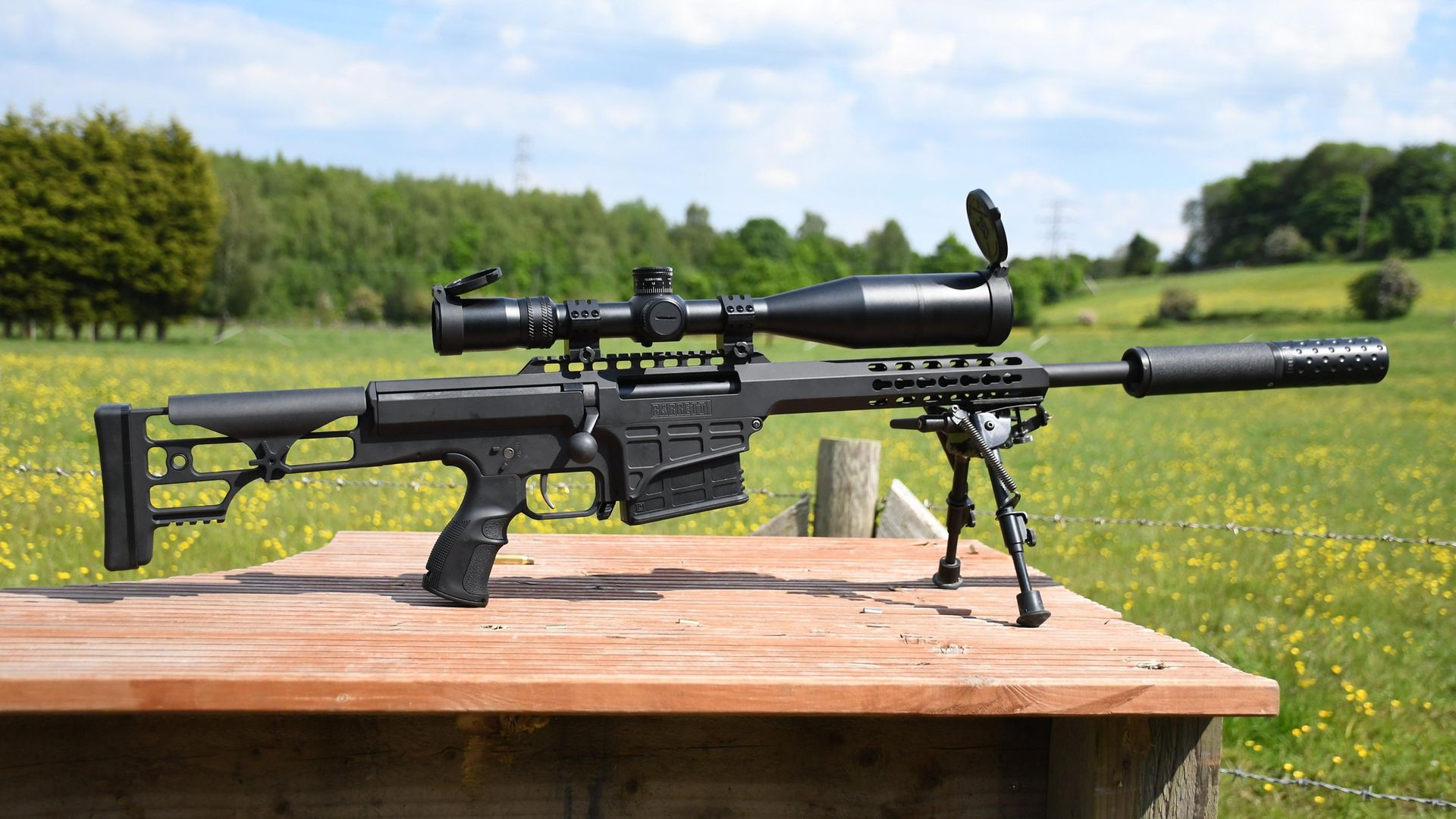 credit: Chris Parkin
credit: Chris Parkin
Barrett may have a reputation for large-calibre, super-long-range rifles capable of withstanding battlefields, but it’s nice to encounter one of the slightly lighter, comparatively delicate variants. The 98B Field is similar in many respects to the MRAD I reviewed a few years ago which still employs the same black nylon inserts within the action to facilitate alternate bolt dimensions.
We have all become accustomed to the term ‘chassis rifle’, that name, by derivation, is similar to the older form of car manufacture, where a body shell sat on top of a chassis carrying the mechanical elements and running gear. Car design evolved to realise that the monocoque (an encapsulating structure) made from complex stampings, with folded and welded seams made for a lighter and stiffer structure.
The rifle is a simpler structure, but I’ve adopted the term ‘monocoque’ to describe the MRAD, and the 98B is similar as the build is unique to Barrett, rather than a commercial Rem 700 type footprint with twin screws fastening the mechanics to the stock. The Barret is an ‘all in one’ design from the drawing board to the shoulder.
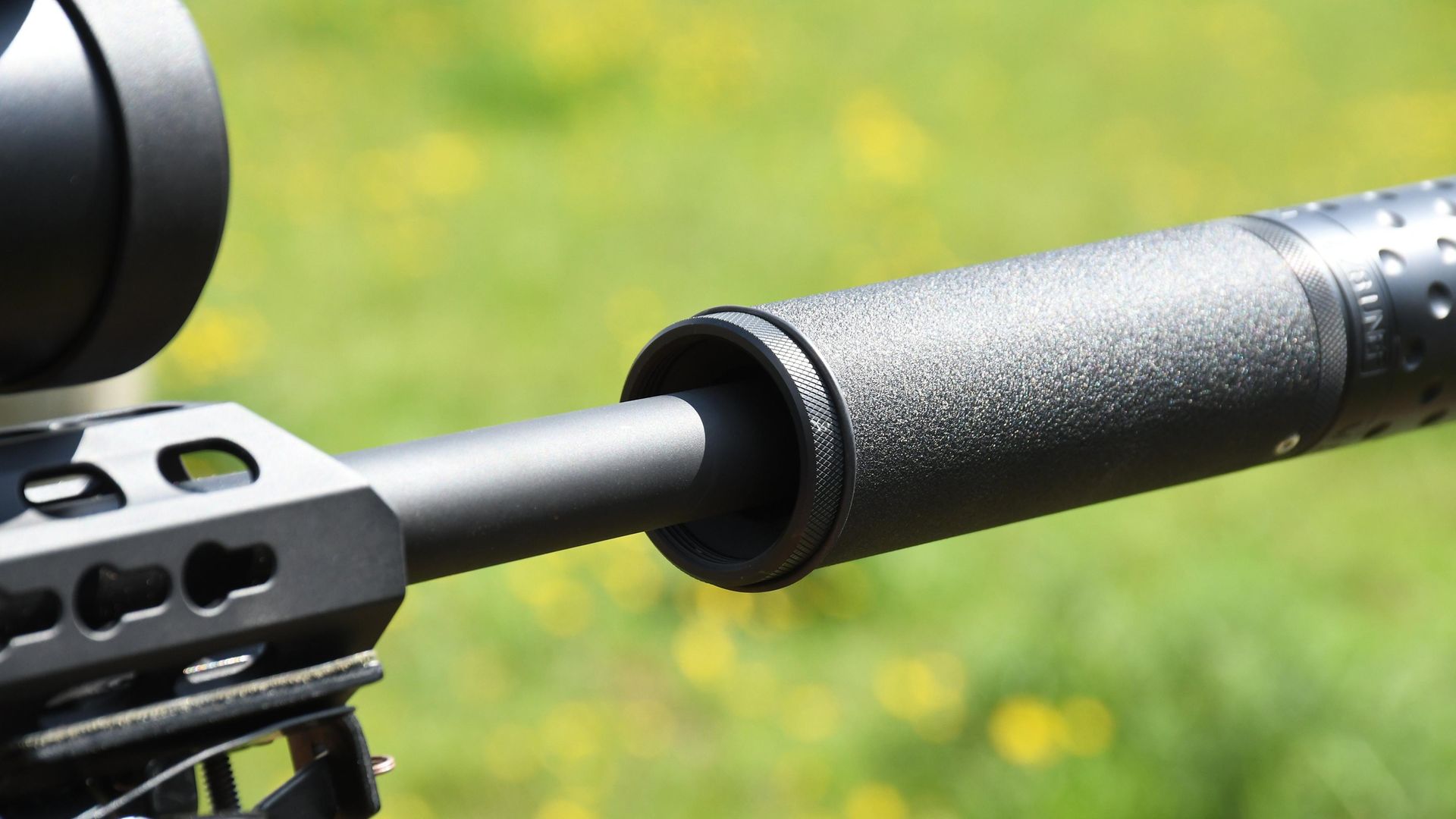 credit: Chris Parkin
credit: Chris Parkin
The barrel has a 5/8x24 thread for a moderator or brake, and I fitted a Wildcat Evolution straight away. It measures up at 18.1mm diameter reaching back 18"/457mm to the breech face from the dished 11-degree crown. This .308 will never be the fastest gun but it is certainly well balanced and very compact. An octagonal tubular forend surrounds the barrel, fully free-floating with masses of M-Lok slot accessory space to add whatever you like. Mine also included a flush cup sling mount on the left side and I fitted a Harris adaptor stud underneath for the fore-end.
This lighter build doesn’t have the full-length upper Picatinny rail available on MRAD and the very similar SMR and I liked it for that, as my intention was to add forward thermal or night vision accessories on the full-length rail. The Picatinny rail present is exactly that, the true specification at 180mm long, which is enough space for an accompanying large optic on standard rings.
A bit like an AR15, the upper and lower halves of the rifle are joined with a hinge pin just in front of the magazine well. This is rock solid and the corresponding latch locks the upper and lower together, which is spaced 310mm rearward, just under the front of the cheekpiece.
Although it does require a bit of effort to separate, it certainly locks back in position like a bank vault door, ensuring long-term accuracy and reliability. You must unlatch it to draw the bolt out of the rifle, along with its twin nylon inserts that enable exceptionally smooth bolt stroke and form a key design concept across the Barrett range of multi-calibre rifles.
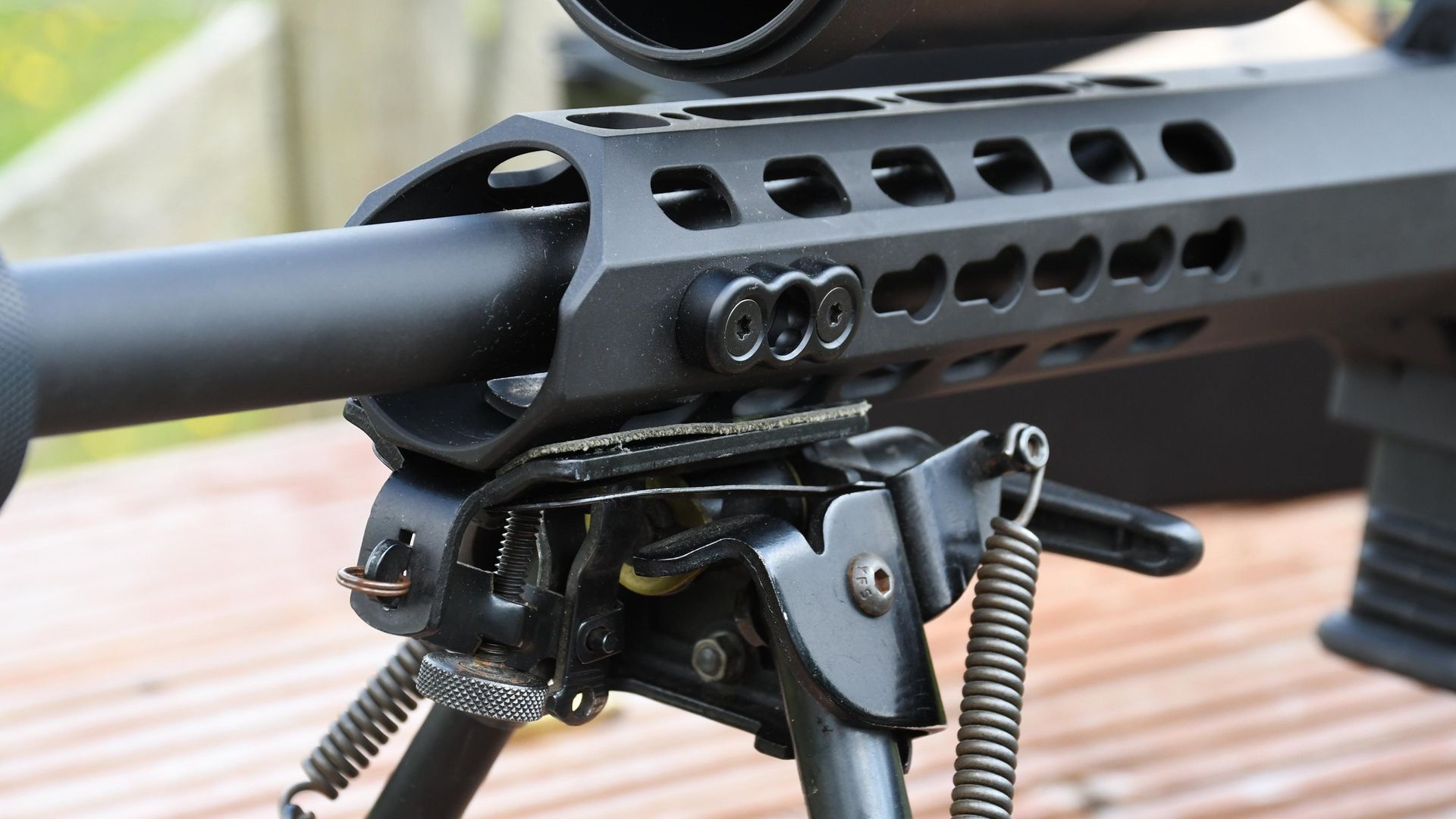 credit: Chris Parkin
credit: Chris Parkin
The Barrett 98B Field has quality engineering
The benefits of this design include precision cut-out and feed ramp details for alternate cartridges and magazine sizes within the same monocoque, all available from Barrett’s own range of magazines for both small and large cartridges. It’s a simple yet functional system and clearly indicates significant R&D as well as financial investment found from a military contractor who has to prove their kit’s reliability in the toughest of environments, with users not necessarily having the time for delicacy. Well, this battle-tested ruggedness carries over rather impressively, yet the rifle never feels brutishly or agricultural. It’s actually quite refined, in fact.
The bolt has 9 lugs in three rows for short lift via a polymer knob on the 65mm handle, which, paired to 175mm overall bolt length, ensures correct leverage ratios. It avoids any jamming, which is already virtually impossible unless a foreign body is in place, and even then, I suspect it would still work as the nylon sleeve would be sacrificed and easily replaced if worn by endless abrasion.
The underside magazine is Barrett’s proprietary polymer unit holding ten rounds in two columns, feeding from both sides. It can be loaded in or out of the gun and there is enough space through the 102mm ejection port to finger feed individual rounds or perform a ‘throw in’ emergency backup shot if needed.
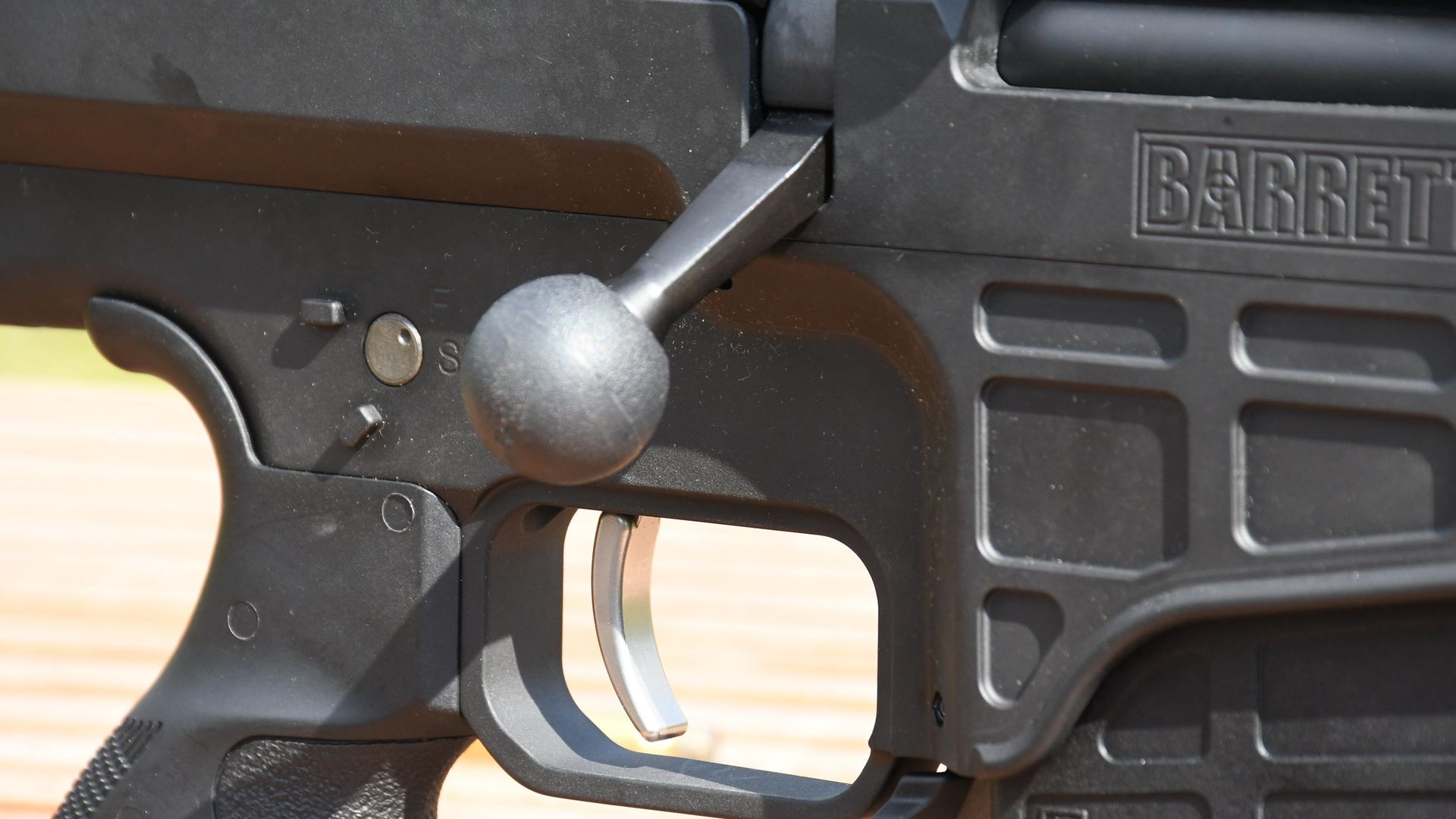 credit: Archant
credit: Archant
Everything feeds cleanly to the chamber with no abrasion, just like the ammo in the mag itself; all is gently restrained against chamfered polymers rather than angular steel. There is an ambidextrous release catch on the front of the trigger guard which offers masses of space around the single stage trigger. Its silver blade is 30mm long and 9mm wide, breaking at 1,200gr/42oz. It is adjustable and, on inspection, shows purposefully machined components that are clearly a class apart in terms of long-term durability.
Don’t forget what these rifles have evolved from, and Barrett have taken no backward steps to cheapen the production process, which is a good thing, as this one is still expensive. They seem to have little need of listing metallic surface treatments other than the aluminium chassis, which is Cerakoted. Their reputation is well imprinted in shooting psyche, and so far, I’ve found that to be a real-world truth, rather than a myth.
The pistol grip is reminiscent of an AR-15 with its underslung position and shape but perhaps not quite identical. It has got the usual short reach to blade of 65mm from the grip’s throat, so you do reach further ‘through’ the trigger guard, with the blade under your knuckle if not deliberately drawn back. The left side safety is a simple lever: up for safe (no bolt lock), down for fire, with firm detents to lock position. Like the tube it is, the monocoque withholds the bolt throughout the entire 140mm transit, with the handle running in the right-side slot. The back end, above the latch, is where the corners are all smoothed off and the adjustable cheekpiece nestles beyond, creating a comfortable head position.
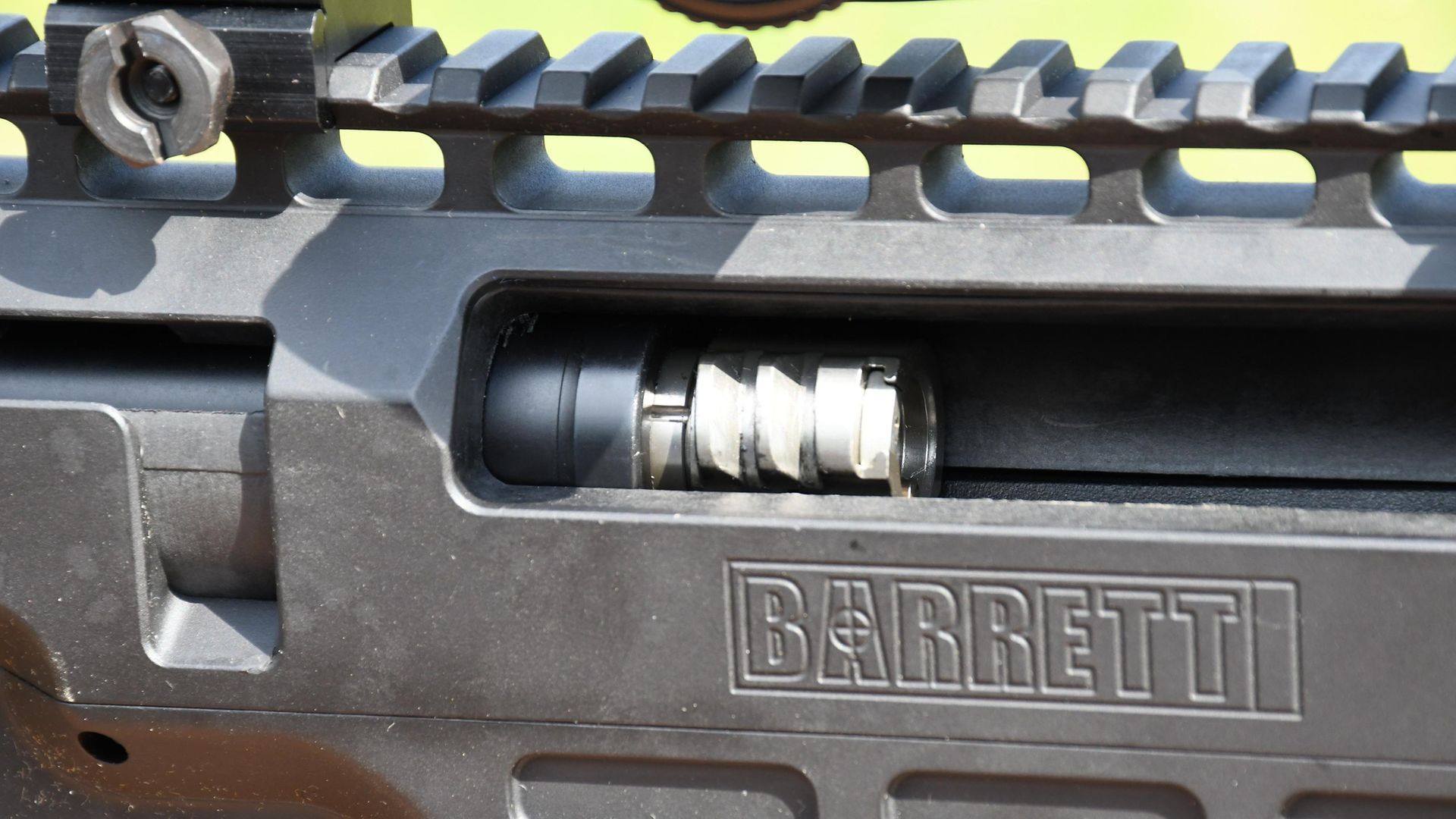 credit: Chris Parkin
credit: Chris Parkin
Barretts are built for battle
A starfish-like aluminium dial on the right side offers easy grip for tensioning the comp position anywhere up to 34mm above its base level, with twin QR anchor points for a sling below. The cheekpiece is 45mm wide with a radiused top, which although broad, shows cut-outs for your jawbone and feels a lot better welded to your cheek than you may expect, although if it were mine, out would come the spacers and gaffer tape to further customise the fit.
There is plenty of space for the underside-supporting hand and wrist without getting clonked during recoil. You get 52mm of Picatinny rail for a monopod or to use as a bag rider with twin frontal surfaces that offer hand hold locations, snugging the rifle’s 16mm thick recoil pad into your shoulder.
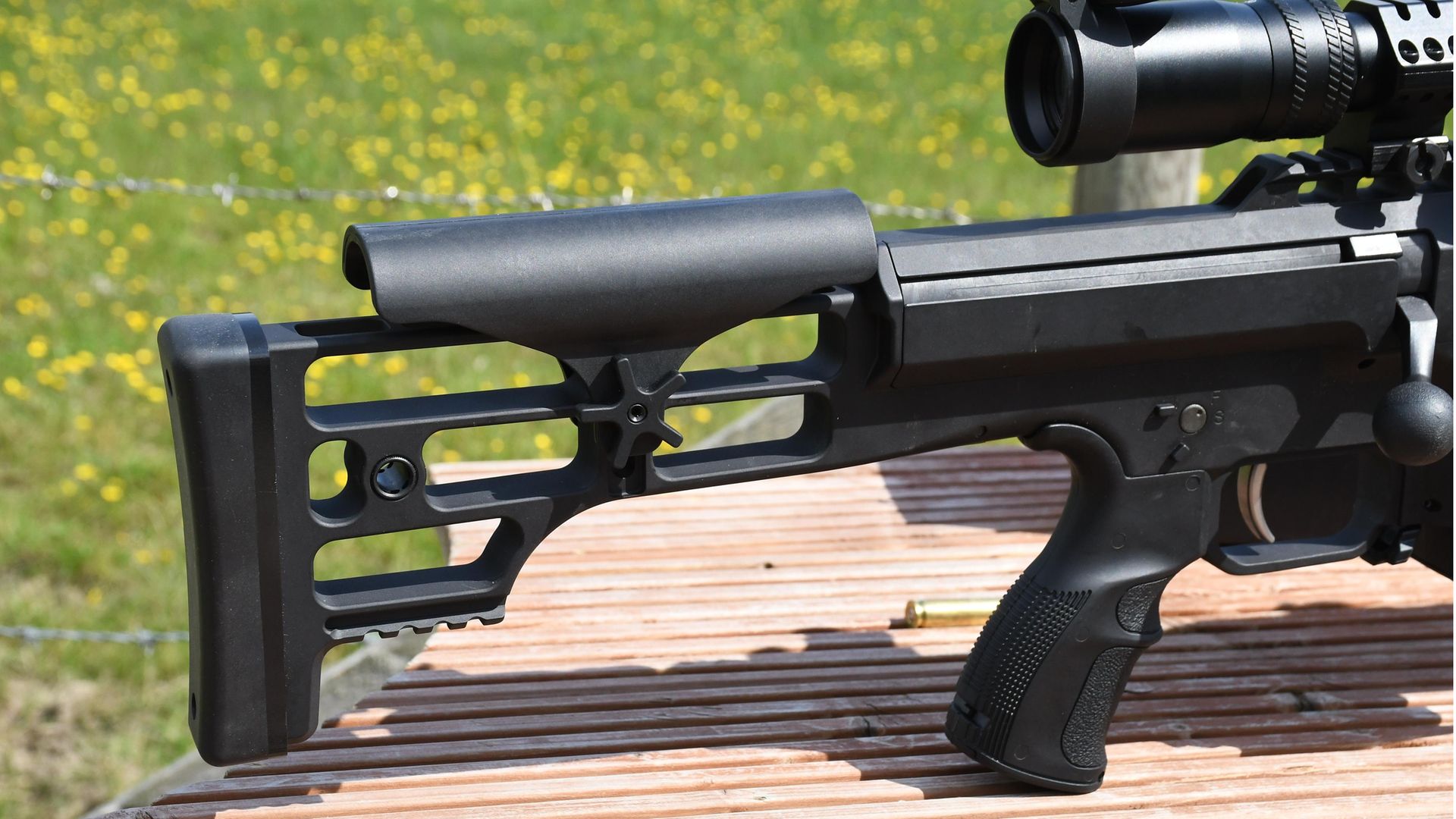 credit: Chris Parkin
credit: Chris Parkin
The broader heel of the pad tapers from a 37mm width down to 30mm at the toe some 125mm below it. I found it comfortable, and the medium-soft rubber compound moulded and gripped well onto clothing and into the shoulder without feeling spongey. Length of pull was fixed at 13 3/8"-340mm, which was a bit short for me but seemed to feel longer on this compact rifle. The butt pad is removable on twin screws and spacers could add to this if necessary.
Edgar Brothers had supplied a Sightmark scope in rings, so other than the addition of a moderator, it was a straightforward trip to the range after cleaning the barrel, which requires the underside unlocking button to be pressed, which is flush with the stock and won’t get accidentally operated.
Once confident with the process, it isn’t too bad, it just feels aggressive at first heaving the upper with the bolt handle while your underside hand presses the unlock button. Once done, the bolt pulls straight out, as will the nylon spacers if necessary. This actually makes the rifle very easy to borescope, probably the easiest ever in fact, and of course you don’t need to adjust your cheekpiece for bolt removal or cleaning, so you’ll never lose position.
The handling dynamics of this bolt location are worth it, and I like the solidity of it far more than I dislike the action and effort involved in opening it, so good on you Barrett.
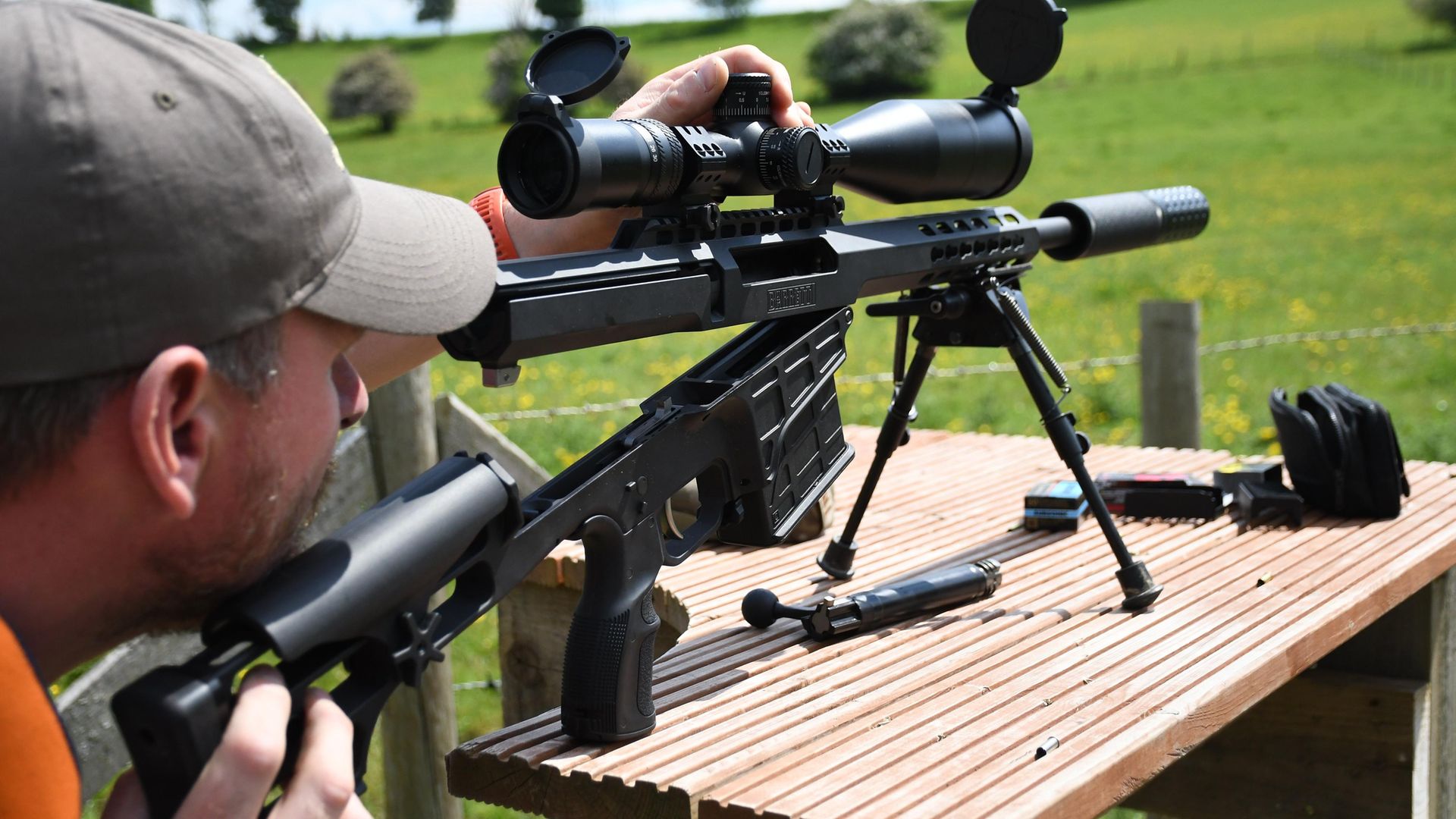 credit: Chris Parkin
credit: Chris Parkin
How did the Barrett 98B Field perform on the range?
Results on target were very ammunition-dependant; I had Hornady 150gr soft-point bulk ammo in a crate to run it in. This developed reliable 50mm groups at 100m, perfectly satisfactory for the realistic deer stalker but not quite the expectation for a rifle retailing at just under £7k. I do not think a finer bullet has ever been made for any rifle cartridge than the 168gr BTHP in .308, a match made somewhat in heaven! These things seem just ‘right’ and certainly did in this case.
Advertised muzzle velocity was 2700fps with the short barrel 98B producing 2659fps on average. These just cloverleafed ten rounds at 100m and I only stopped at ten because the mag was empty. I usually run 5 when testing, even on a heavy barrel. I repeated 5 more rounds at 200 and 300 metres to see similarly appealing real-world groups of a superb standing from factory ammo.
It’s interesting to note the air temperature was 22°C with virtually zero wind and 20 rounds gets the barrel hot… Barrett’s barrel was seemingly impervious to this and although this gun isn’t winning a benchrest match, it is not a benchrest rifle after all, or cartridge, it just exudes an air of confidence which transfers to the shooter.
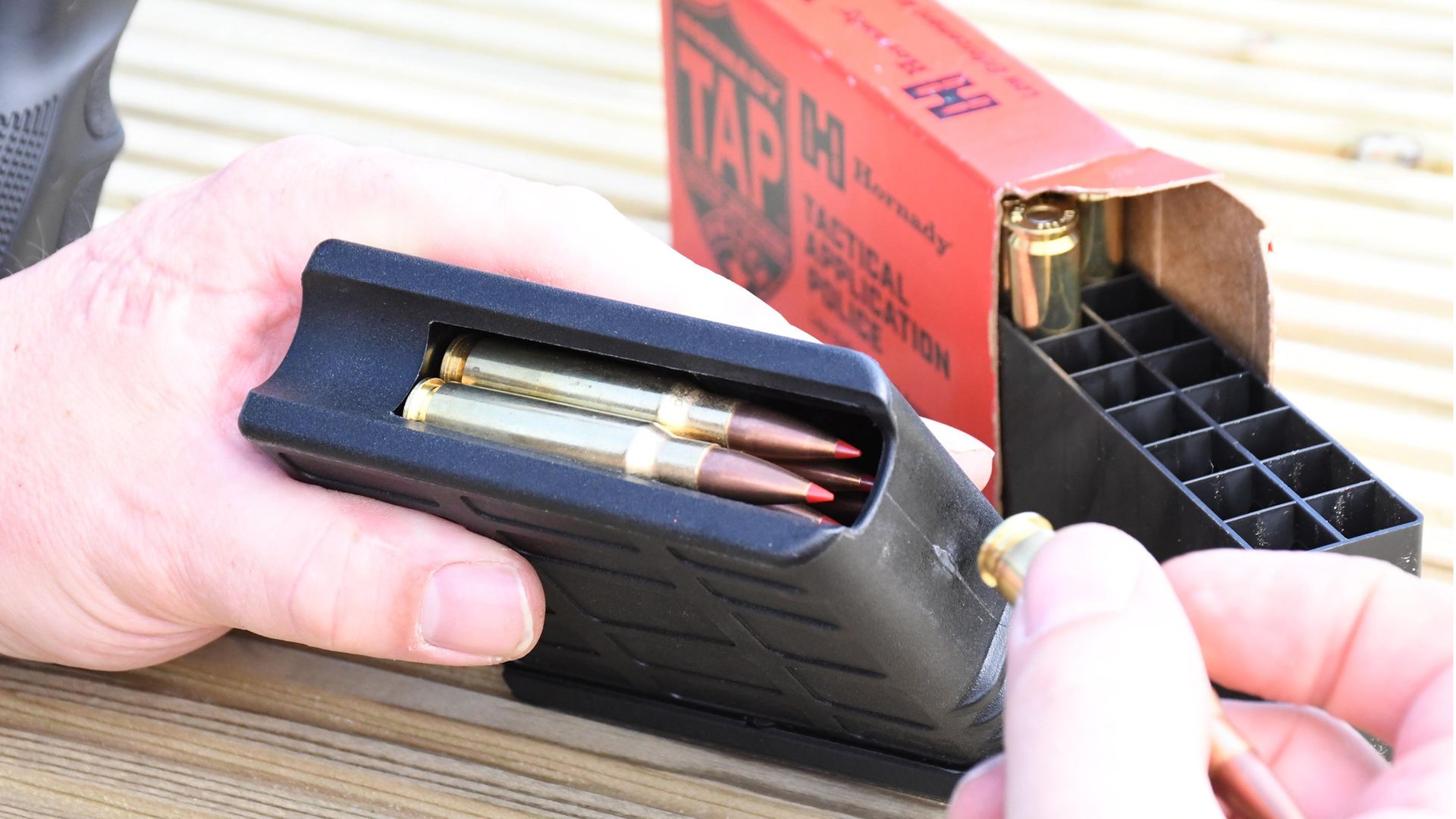 credit: Archant
credit: Archant
Likes
- Superb barrel for long shot strings with reliable precision
- Well-designed stock and overall structural design
- Linear recoil without resonance
- Reliable - as you’d expect from a Barrett
Dislikes
Verdict
- This is one of my favourite Barretts, with everything mechanically sound and not too much bulk to lug around every day. It is very expensive, even taking into account the impressive thermal stability of the barrel (which was genuinely impressive).You do need to factor in how tough Barretts are, but nevertheless, it’s still a very expensive rifle.
Specifications
Calibre: .308 on test
Overall length: 990mm/-39” (930mm/36.5” folded)
Barrel: 457mm/18” 1 in 10” (254mm) twist rate
Weight: 4.25kg/9.36 lbs
Stock Material: 7000 Series Cerakoted Aluminium
Magazine capacity: 10+1
Trigger: Single- stage adjustable set at 1,200gr pull weight
Supplier: www.edgarbrothers.com
Price: £6,950
Tel: 01625 61317
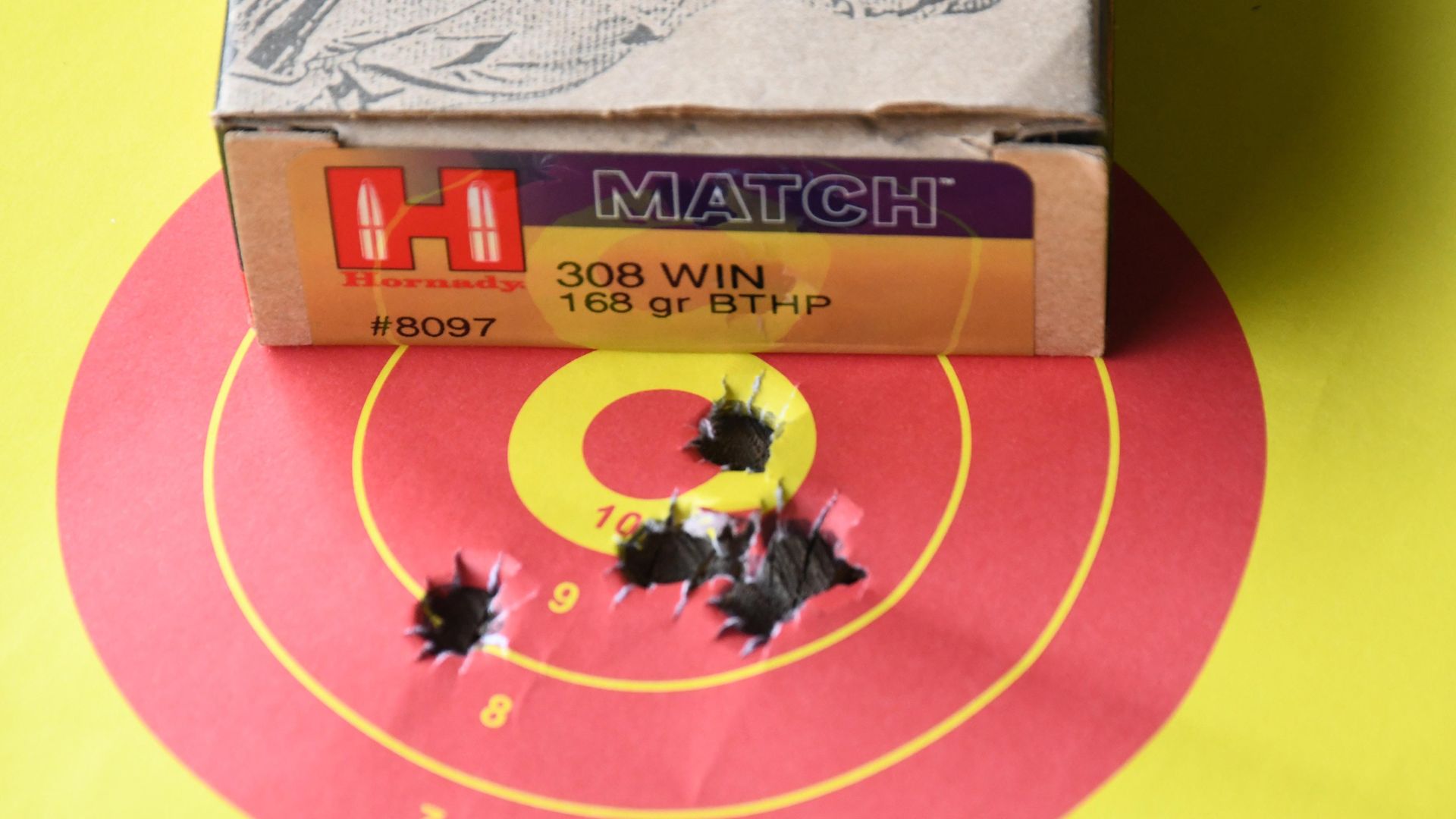 credit: Chris Parkin
credit: Chris Parkin
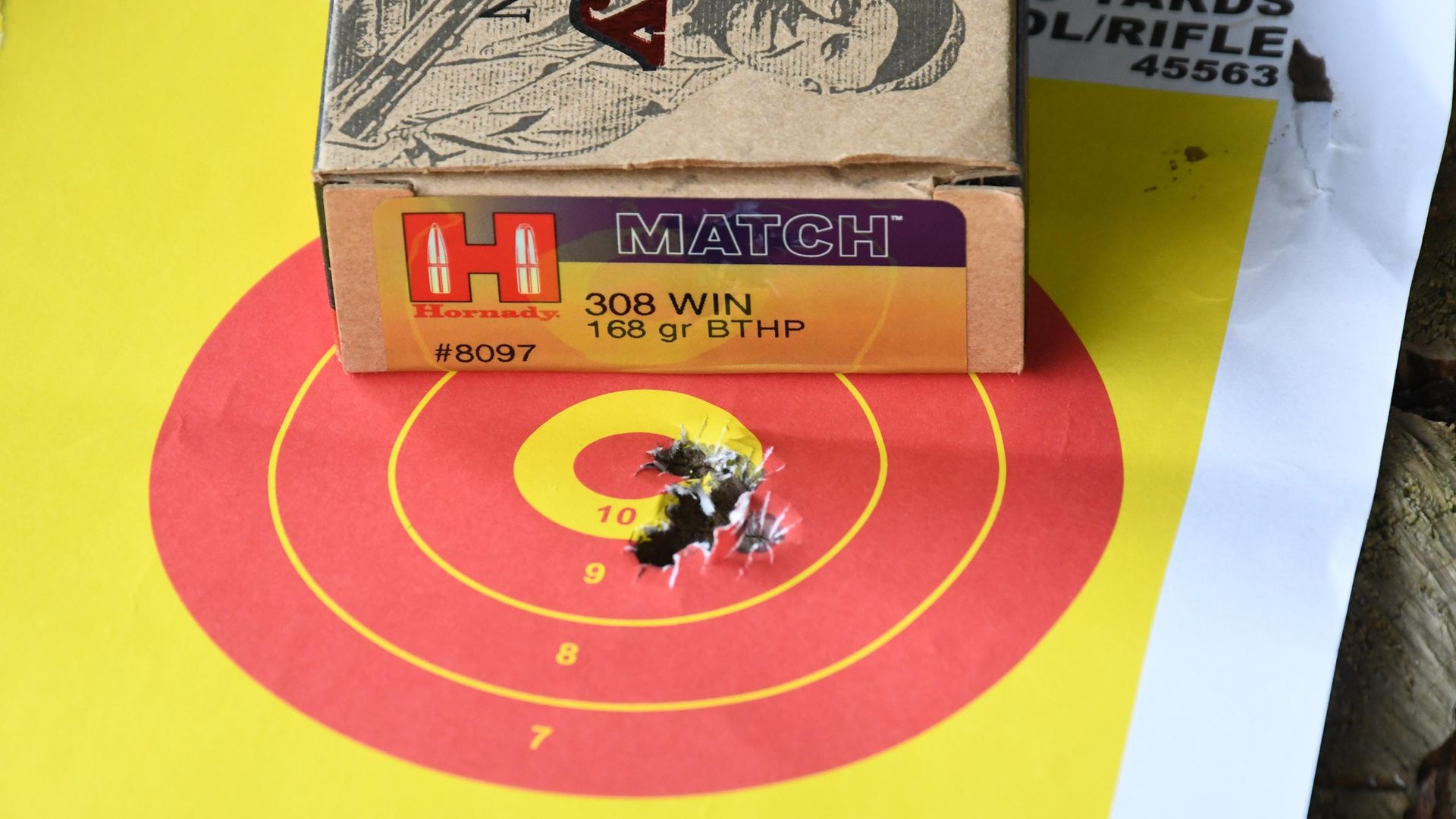 credit: Chris Parkin
credit: Chris Parkin
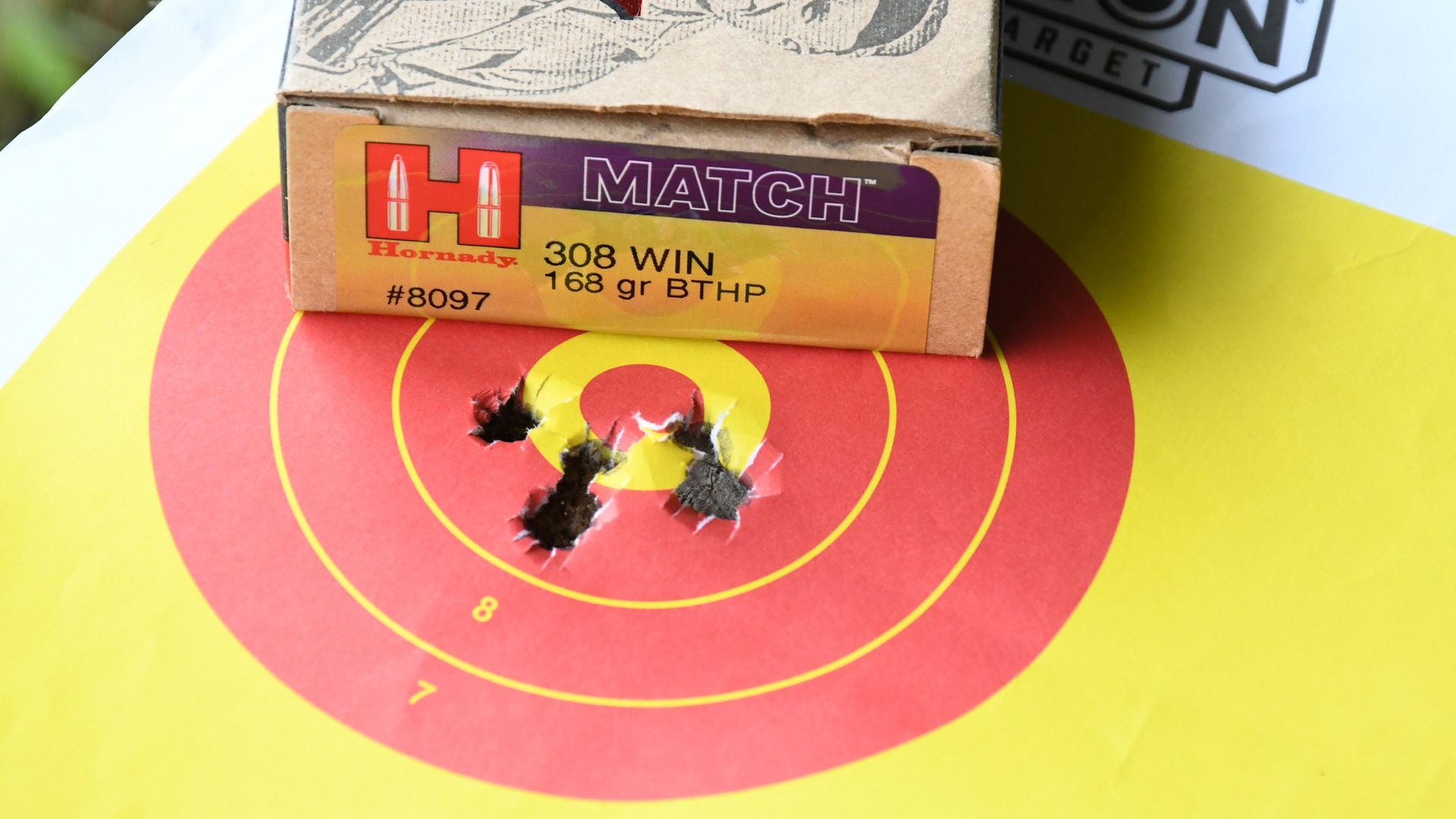 credit: Chris Parkin
credit: Chris Parkin